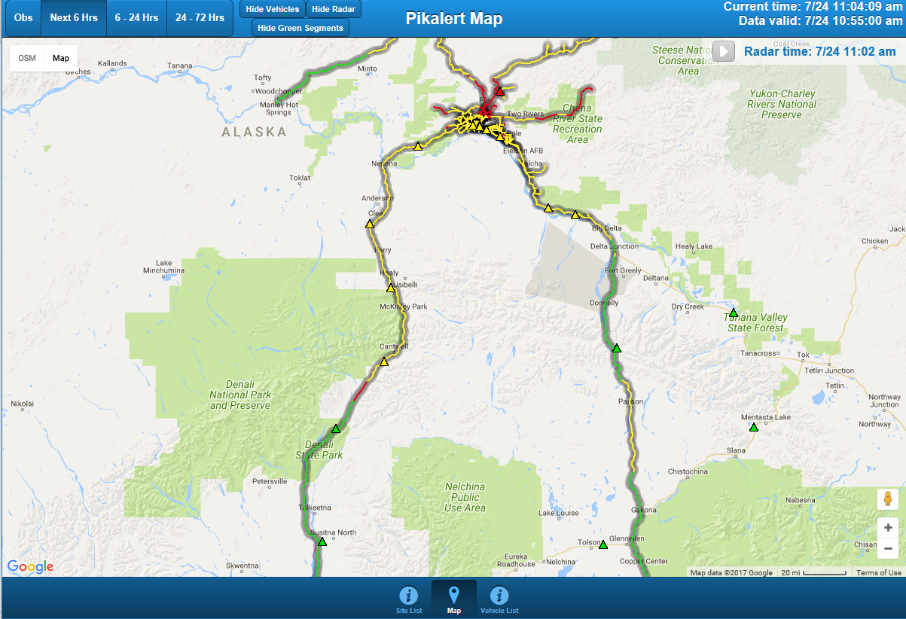-
July 26, 2017
UAF Remote Weather Information System Project

Over the past several years, PacTrans has funded research out of the University of Alaska Fairbanks (UAF) regarding an Alaska Department of Transportation and Public Facilities (ADOT&PF) project that seeks to implement a Maintenance Decision Support System (MDSS) to better use local weather information to reduce winter maintenance costs. This is an ongoing project since 2014 where UAF has been funded to oversee contractors UCAR and Weather Cloud’s efforts to collect weather data and provide snow and ice control recommendations to M&O decision makers.
Weather predictions are made using the National Weather Service’s (NWS) weather predictions in combination with local weather data collected from Remote Weather Information Systems (RWIS) and mobile data from vehicle mounted sensors provided by Weather Cloud. These data are used to calibrate weather models for a specific area, and the results provide accurate, high resolution weather forecasts. The system then displays road condition data on a road map and suggests maintenance activities base on these data.

The roads shown in red indicate potentially hazardous conditions. By clicking on that roadway segment, the conditions are displayed. In this case, there are foggy conditions which require no action by M&O beyond reporting to the public through the 511 system. The system also provides a 72 hour weather forecast for planning purposes.
MDSS has been in use by the Northern Region in Fairbanks since 2014 with good success. The system was implemented on the Kenai Peninsula in the fall of 2016 and will be implemented in the Anchorage area in the fall of 2017.
A key component of the system are the RWIS installations around the state. The number of systems is limited due to costs, which often exceed $100,000 per system and require about 300 watts of power. Weather Cloud partnered with the UAF to develop a low cost RWIS capable of providing air temperature, pavement temperature, relative humidity, and wind data which costs about $7,500 per system and requires less than 10 watts of power. Two systems were installed in the Fairbanks area in the fall of 2016 and ran over the winter, operating at -50oF without failure. The systems were collocated with existing RWIS systems to compare the data. Analysis of the data indicate the temperature and wind data tracked very closely with the existing RWIS, but the relative humidity gauges had a bias at very cold temperatures which need calibrating.
ADOT&PF will be integrating the new RWIS into the MDSS system in the fall of 2017 to test how well the low cost systems work with MDSS. ADOT&PF further plans to install two more systems in Eagle Summit, a remote area north of Fairbanks, to test the system in a particularly severe environment which requires satellite communications and for the system to be completely battery powered. The blowing snow and subzero temperatures at Eagle Summit are some of the harshest found in Alaska. If this test is successful, we can feel comfortable with installing the system anywhere in Alaska and be assured of good performance.


